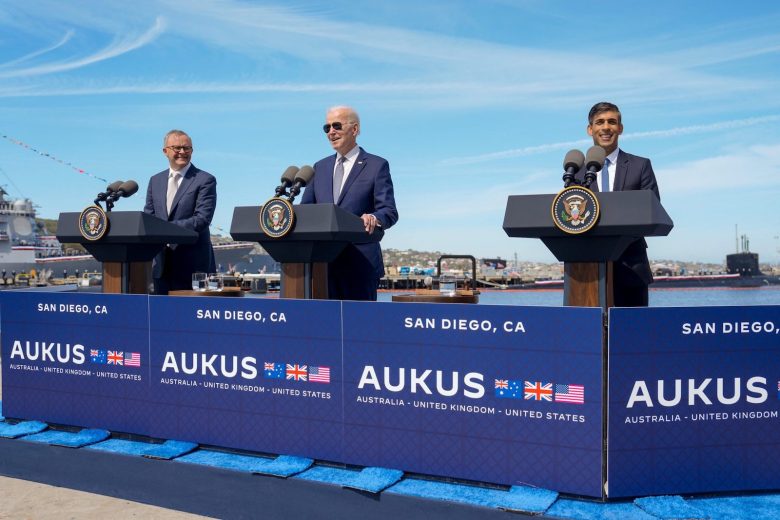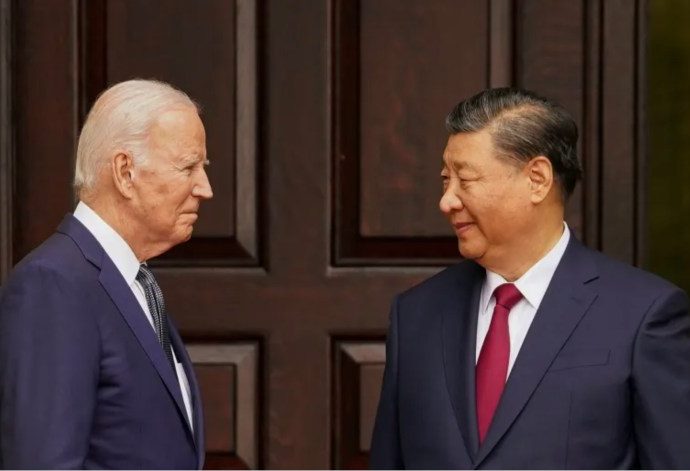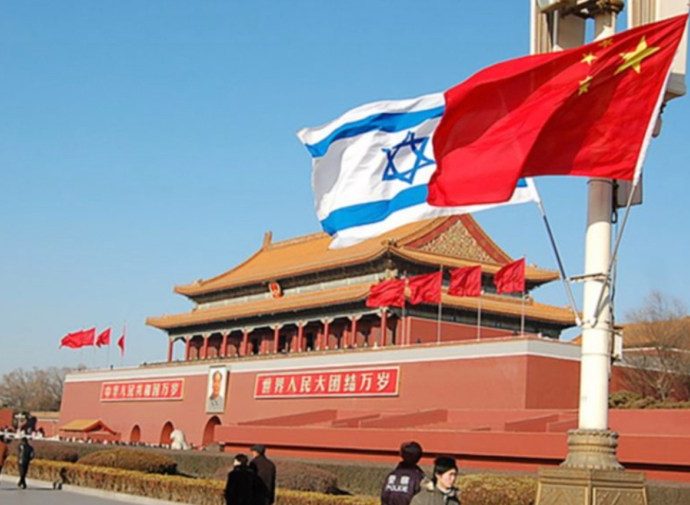Don’t be fooled by Biden and Xi talks
There were smiles for the camera, handshakes, warm words and the unveiling of a couple of agreements.
But beyond the optics of the first meeting in over a year between the leaders of the world’s two biggest economies, not an awful lot had changed: There was nothing to suggest a “reset” in US and China relations that in recent years have been rooted in suspicion and competition.
President Joe Biden hinted as much just hours after the face-to-face talks, confirming that he still considered his Chinese counterpart, Xi Jinping, a “dictator.” Beijing hit back, with foreign ministry spokesperson Mao Ning telling reporters Biden’s remark was “extremely wrong and irresponsible political manipulation.”
As a scholar of US-China relations, I believe the relationship between the two countries can be best described as an “enduring rivalry” – a term used by political scientists to denote two powers that have singled each other out for intense security competition. Examples from history include India and Pakistan, France and England, and the West and the Soviet Union.
Over the past two centuries, such rivals have accounted for only 1% of the world’s international relationships but 80% of its wars. History suggests these rivalries last around 40 years and end only when one side loses the ability to compete – or when the two sides ally against a common enemy.
Neither scenario looks likely any time soon in regards to China and the US.
How enduring rivalries end
China “is a communist country … based on a form of government totally different than ours,” Biden said after his meeting with Xi.
That comment gets to the heart of why diplomacy alone cannot reset the US-China relationship. Washington and Beijing are not rivals due to any misunderstanding that can be sorted out through talks alone.

Rather, they are rivals because of the opposite reason: They understand each other only too well and have come to the conclusion that their respective world outlooks cannot be reconciled.
The same is true for many of the issues that divide the two countries – they are framed as binary win-lose scenarios. Taiwan can be governed from Taipei or Beijing, but not both. Similarly, the East China and South China seas can be international waters or Chinese territory; Russia can be crippled or supported.
For the United States, its Asian alliances are a force for stability; for China, they’re hostile encirclement. And both countries are right in their respective assessments.
Diplomacy alone is insufficient to resolve a rivalry. At best, it can help manage it.
When the US calls, who picks up?
Part of this management of the US-China rivalry involves finding areas of agreement that can be committed to.
And on November 15, Biden and Xi announced deals over curbing China’s production of the deadly drug fentanyl and the restoring of high-level, military-to-military dialogue between the two countries.
But the fentanyl announcement is very similar to the one Xi gave to then-President Donald Trump in 2019. The US administration later accused China of reneging on the agreement.
Similarly, committing to restarting high-level dialogue is one thing; following up on it is another. History is dotted with occasions when having an open line between Beijing and Washington hasn’t meant a whole lot in times of crisis.
In 2001, when a US surveillance aircraft collided with a Chinese jet over Hainan Island, Beijing didn’t pick up the phone. Likewise, during the Tiananmen Square massacre, then-President George H W Bush urgently tried to call his counterpart Deng Xiaoping but was unable to get through.
Moreover, focusing on what was agreed to in talks also highlights what wasn’t – and is unlikely to ever be – agreed to without a substantial shift in power that forces one side to concede to the other.
For example, China wants the US to stop selling arms to Taiwan. But Washington has no intention of doing this, as it knows that this will make the disputed island more vulnerable to Beijing. Washington would like China to end its military displays of strength over the Taiwan Strait; Beijing knows doing so risks seeing Taiwan drift toward independence.
American policymakers have long said what they want is China to “change” – by which it means to liberalize its system of governance. But the Chinese Communist Party knows that doing so means self-liquidation – every communist regime that has allowed space for alternative political parties has unraveled.
Which is why American attempts to engage China are often met with suspicion in China. As former Chinese leader Jiang Zemin commented, engagement and containment policies have the same aim: to end China’s socialist system.
For similar reasons, Xi has shunned attempts by the US to bring China further into the rules-based international order. The Chinese leader saw what happened when Soviet leader Mikhail Gorbachev tried to integrate the Soviet Union into the Western order in the late 1980s – it only hastened the demise of the socialist entity.
Instead, Xi calls for a massive military buildup, the reassertion of Chinese Communist Party control and an economic policy based on self-reliance.
Actions speak louder …
The encouraging words and limited agreements hammered out in the latest meeting between Xi and Biden should also not distract from the actions that continue to push the US and China further apart.
China’s show of force in the Taiwan Strait has been sustained for three years now and shows no sign of abating. Meanwhile, Beijing’s navy continues to harass other nations in the South China Sea.
Similarly, Biden has continued the US path toward military alliances aimed at countering China’s threat. It recently entered a trilateral agreement between the US, Japan and South Korea. And that came two years after the establishment of AUKUS, a security partnership between the US, Australia and the UK that has similar aims.

Meanwhile, the US administration will continue to tighten the screws on China’s economy through investment restrictions. Biden is well aware that easy-flowing money from Wall Street is helping China weather choppier economic waters of late and is keen to turn off the tap.
The point of diplomacy
This isn’t to say that diplomacy and face-to-face talks are pointless. They do, in fact, serve a number of interests.
For both men involved, there is a domestic upside. For Biden, playing nice with China projects the image of a statesman – especially at a time when, due to US positions on Ukraine and the Middle East, he is facing accusations from the political left of being a “warmonger.”
And encouraging Beijing to tread softly during the US election year may blunt a potential line of attack from Republicans that the administration’s China policy is not working.
Meanwhile, Xi is able to showcase his own diplomatic skills and present China as an alternative superpower to the US and to potentially cleave the Western business community – and perhaps even major European nations – from what he would see as the US anti-China coalition.
Moreover, summits like the one in San Francisco signal that both the US and China are jointly committed to at least keep talking, helping ensure that a rocky relationship doesn’t descend into anything more belligerent – even if that doesn’t make them any friendlier.
Michael Beckley is Associate Professor of Political Science, Tufts University
This article is republished from The Conversation under a Creative Commons license. Read the original article.




















